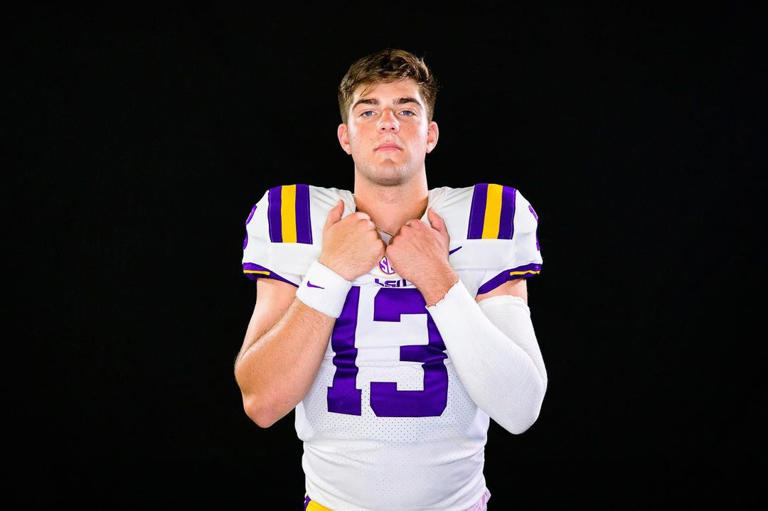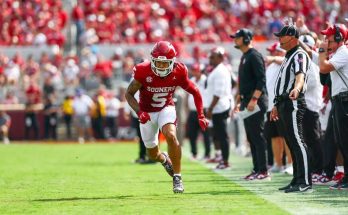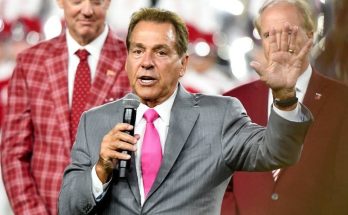Loyalty over Lucrative Lure: LSU Quarterback Garrett Nussmeier Rejects $4.5 Million NIL Offer from Alabama, Choosing to Remain True to Purple and Gold – An Unprecedented Display of Collegiate Loyalty, Challenging the Shifting Landscape of College Athletics and NIL Deals – Analyzing the Implications of Nussmeier’s Decision and the Future of College Football
In an era where college athletics has been dramatically reshaped by the advent of Name, Image, and Likeness (NIL) deals, one story stands out as a remarkable testament to loyalty and principle: LSU quarterback Garrett Nussmeier’s decision to reject a staggering $4.5 million NIL offer from the University of Alabama to remain with the Tigers. This choice not only surprises many but also sends ripples through the collegiate sports world, where loyalty has often been overshadowed by financial incentives and the increasingly mercenary nature of recruiting and transfers. Nussmeier’s stand represents a profound statement about what it means to be a college athlete in the 2020s, underscoring the tension between tradition and change, and illuminating questions about the future direction of college football.
The NIL era, which officially began in July 2021 following NCAA rule changes, has forever altered the collegiate athletic landscape. Suddenly, student-athletes gained the ability to monetize their fame and personal brands, resulting in lucrative endorsement deals, sponsorships, and partnerships that were once unimaginable at the college level. This development has empowered athletes but also complicated the traditional model of college sports, introducing commercial interests into a realm that was historically defined by amateurism and school loyalty. Within this new paradigm, the allure of vast sums of money often plays a significant role in an athlete’s decisions to transfer schools or reconsider their collegiate commitments.
Against this backdrop, Garrett Nussmeier’s choice emerges as an anomaly—an emblem of steadfast loyalty. Despite being approached with an NIL offer reportedly worth $4.5 million from Alabama, LSU’s archrival and perennial powerhouse, Nussmeier opted to stay true to his original commitment and the Tigers’ purple and gold. To fully appreciate the gravity of this decision, one must understand the competitive and cultural context surrounding LSU and Alabama football.
Alabama, under head coach Nick Saban, has dominated college football for over a decade, amassing national championships and producing countless NFL stars. Their program is a beacon for elite talent seeking both exposure and success. Meanwhile, LSU, a storied program in its own right, has had recent flashes of brilliance but has often been in the shadow of Alabama’s relentless supremacy within the SEC and nationally. The rivalry between these two schools runs deep, steeped in history, pride, and regional significance.
For an LSU quarterback to be courted by Alabama with such a monumental NIL offer speaks volumes about Nussmeier’s talent and marketability. It also reflects Alabama’s aggressive strategy to maintain dominance by leveraging NIL resources to attract top-tier players who can elevate their program even further. That Nussmeier declined this offer not once, but emphatically, shines a light on a rare quality—unwavering loyalty to one’s program and teammates.
This act of commitment carries a broader meaning beyond a simple contract rejection. It challenges the notion that financial gain should be the ultimate factor in college athletes’ decisions. It raises the question: can traditional collegiate loyalty still hold value in a marketplace-driven environment? Nussmeier’s choice suggests it can, and that for some athletes, the emotional and cultural ties to a program, the pride in wearing a particular jersey, and the relationships built within a team and community can outweigh even the most lucrative monetary enticements.
Furthermore, Nussmeier’s decision underscores the evolving identity of the modern college athlete. It highlights a new breed of players who are not only savvy about their personal brand and market value but also deeply aware of their role as representatives of their schools and communities. This dual consciousness—of both business acumen and institutional pride—reflects a maturation in college sports culture.
However, this decision also prompts reflection on the changing nature of competition for talent in college football. NIL deals have introduced a new battlefield where schools with larger resources and more marketable brands can outbid competitors to lure athletes away. This development threatens to exacerbate inequalities between powerhouses and smaller programs, potentially reshaping competitive balance. Nussmeier’s loyalty to LSU, therefore, stands as a counterweight to this trend, affirming that identity and belonging can still trump financial incentives.
At the same time, it must be acknowledged that not every athlete can or should be expected to make similar choices. The NIL era has provided athletes with opportunities for financial security and future career-building that were previously denied. For many, pursuing the best financial opportunities is not just about money but about leveraging their limited window of marketability for long-term benefit. Nussmeier’s decision should not be seen as a rebuke of others who opt differently but as an inspiring example of one player’s values and priorities.
From LSU’s perspective, retaining Nussmeier is a significant win. It bolsters team morale and fan confidence, reinforcing the idea that their program remains attractive beyond financial muscle. It also provides LSU’s coaching staff a valuable narrative in recruitment and team culture building—demonstrating to future prospects that loyalty and tradition are alive and well at Baton Rouge.
On a broader scale, Nussmeier’s decision invites college football stakeholders—coaches, athletic directors, players, and fans—to reflect on the implications of NIL and how it shapes the sport’s future. How can institutions maintain the essence of college athletics—the pride, passion, and loyalty—while adapting to a reality where athletes are also entrepreneurs and brand managers? Can there be a balance between preserving tradition and embracing innovation in athlete compensation?
Moreover, this moment raises critical questions about the long-term sustainability of NIL-driven recruiting battles. Will the arms race in NIL deals ultimately damage competitive parity, or will it foster a more dynamic marketplace that rewards athlete empowerment? Nussmeier’s choice, in some ways, challenges the notion that the biggest NIL offer always wins, suggesting that the human element remains vital in college sports.
In addition, the media and fans have a role in shaping the narrative around such decisions. The often cynical portrayal of athletes as mercenaries can obscure the nuanced realities they face. Highlighting stories like Nussmeier’s helps restore a sense of respect for the complex motivations behind college athletes’ choices, moving beyond simplistic assumptions about money versus loyalty.
It is also worth considering how this story impacts future NIL negotiations. Other athletes and agents may look to Nussmeier’s example as proof that it is possible to prioritize loyalty without sacrificing opportunity. Programs may also seek to cultivate deeper connections with their athletes beyond financial incentives, emphasizing culture, development, and community support.
In conclusion, Garrett Nussmeier’s rejection of a $4.5 million NIL offer from Alabama to stay with LSU is an extraordinary moment in college football history. It stands as a powerful counterpoint to the prevailing narrative that money always dictates decisions in the modern college sports environment. Instead, it shines a spotlight on loyalty, identity, and the enduring value of tradition in a rapidly evolving landscape.
While the NIL era will undoubtedly continue to challenge and redefine college athletics, Nussmeier’s choice reminds us that the human element—the pride of representing a team, the bonds forged with teammates, and the desire to honor one’s commitment—still matters deeply. His decision encourages a hopeful vision of the future where athletes can be both financially empowered and authentically loyal, where the spirit of college football can thrive alongside new economic realities.



